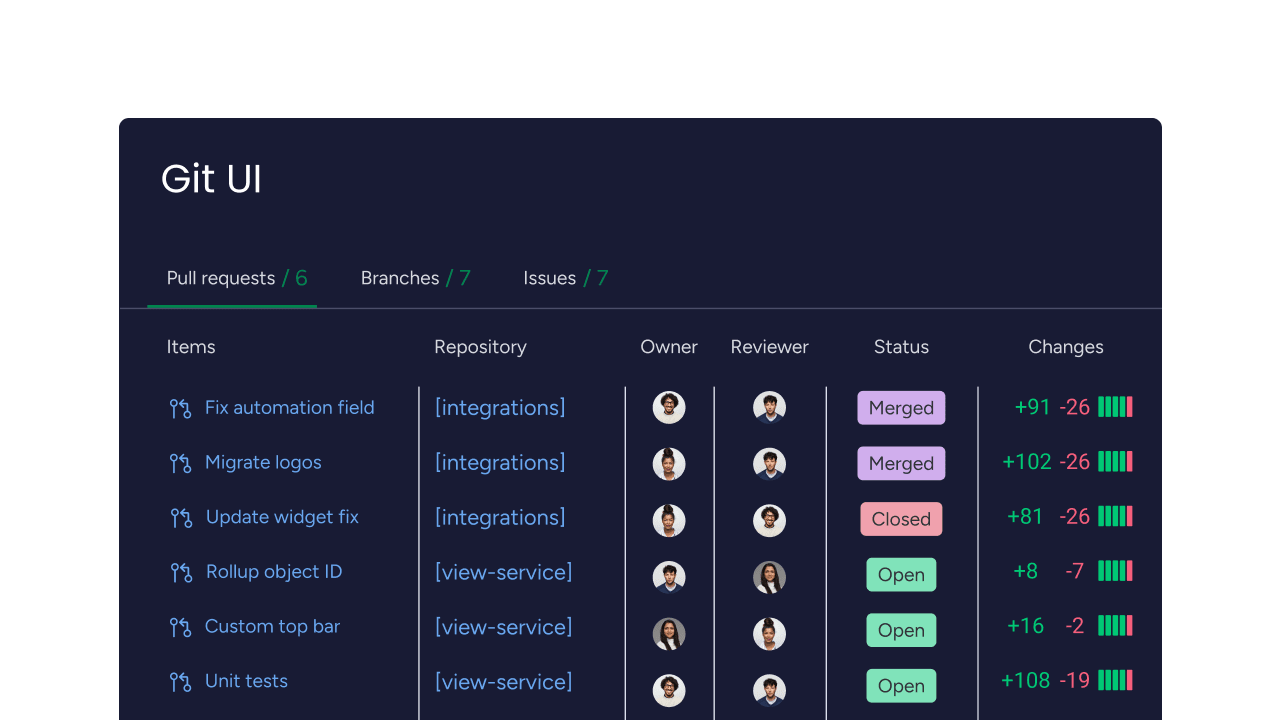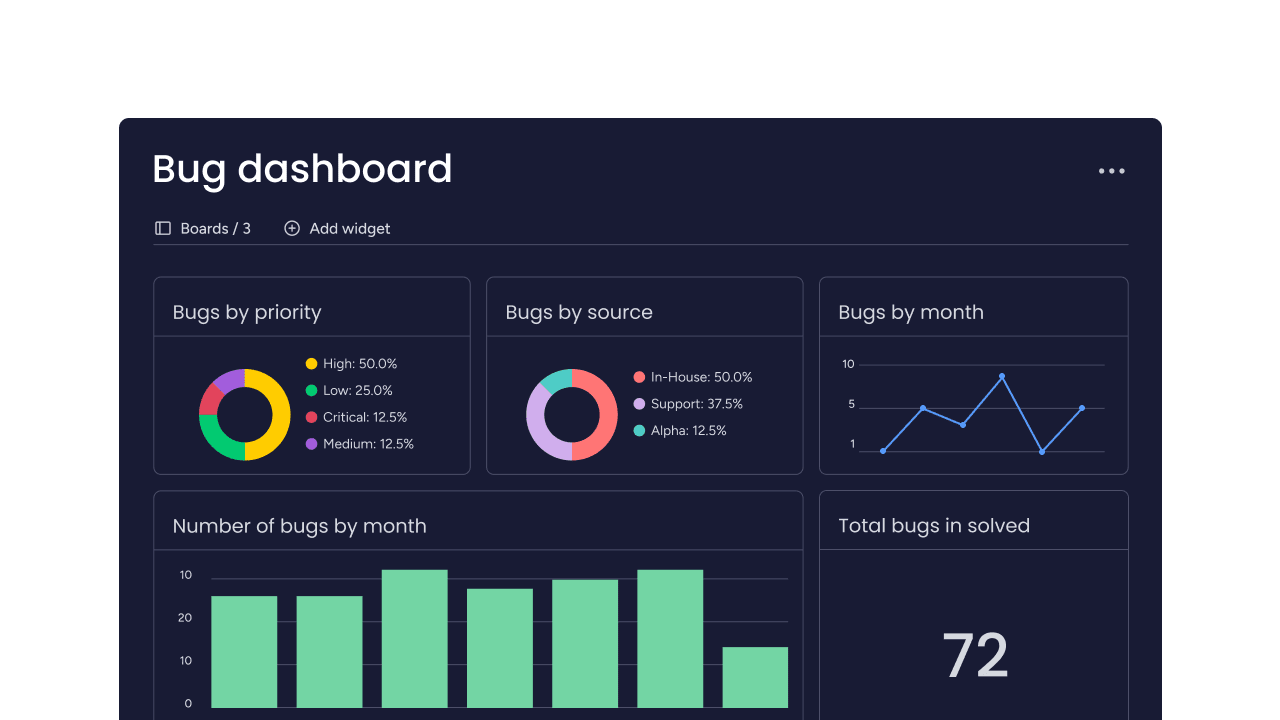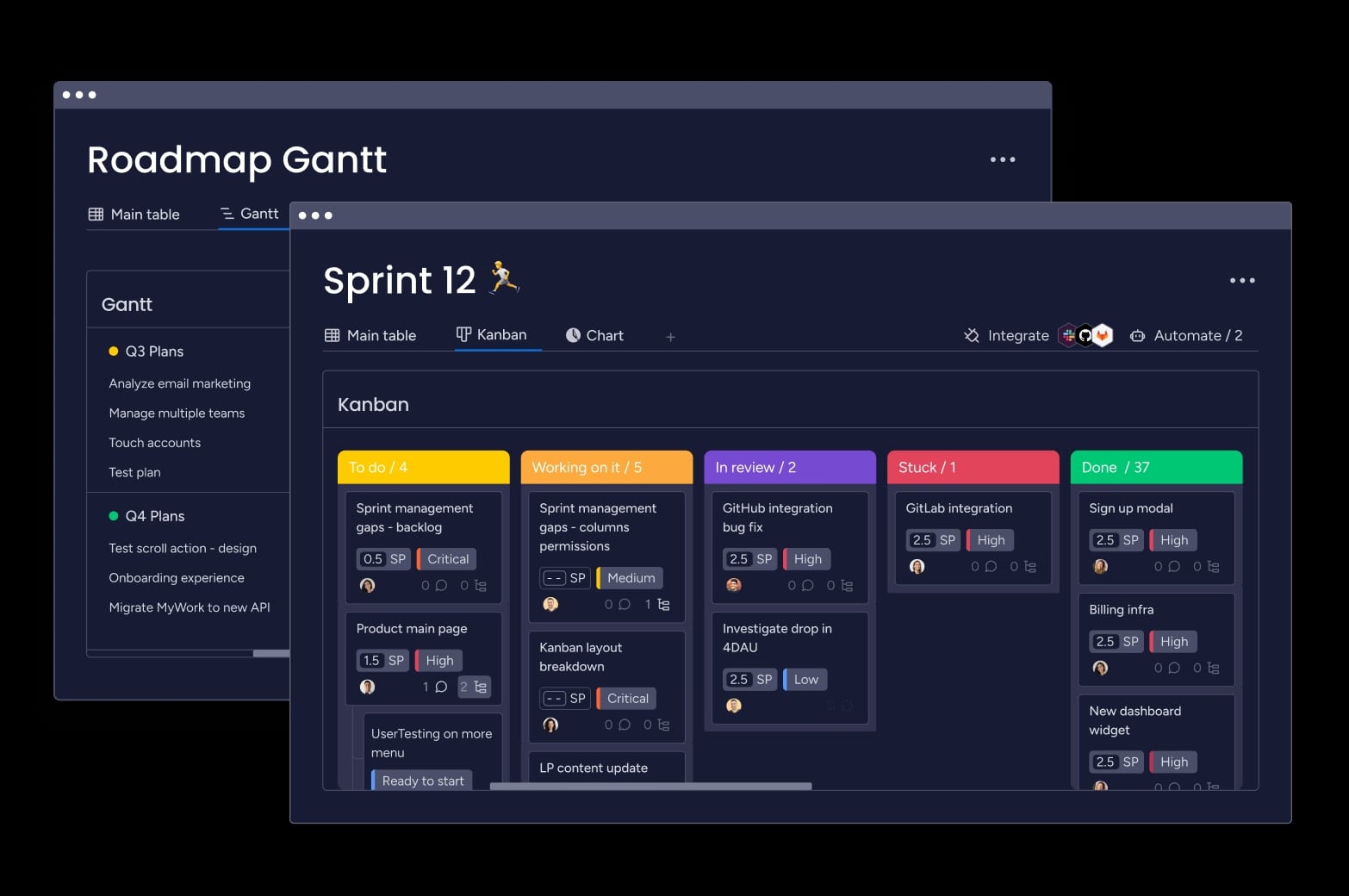Development teams are measured by their ability to deliver value quickly. But the pressure to meet deadlines often forces trade-offs between speed and quality, creating hidden costs that slow future progress. This is the reality of technical debt: the future work created by taking shortcuts today.
Managing debt is not about eliminating it, but about making it visible, understanding its business impact, and creating a clear plan to address it. When teams track debt alongside new features, they make smarter trade-offs that balance long-term health with short-term goals.
This guide breaks down what technical debt means for software teams. It covers its different types, from code and design to documentation, and uncover the common causes behind it. You will also learn how it impacts delivery speed, bug rates, and team morale, turning small issues into major roadblocks.
Ready to take control of your codebase?
Key takeaways
- Strategic debt can be beneficial: technical debt isn’t always bad as strategic shortcuts can help you beat competitors to market or test ideas quickly when you have a clear payback plan.
- Allocate time for reduction: reserve 15–25% of each sprint for debt reduction and treat it as seriously as feature development to prevent debt from overwhelming your team.
- Prioritize by business impact: measure debt using business consequences—track how it affects delivery speed, maintenance costs, and customer satisfaction, not just technical metrics.
- Integrate tracking and visibility: dedicated platforms like monday dev help teams track technical debt alongside features in one shared workflow, giving you the necessary visibility to balance new development with crucial system improvements.
- Communicate consequences: communicate debt’s business consequences to leadership using concrete examp
What is technical debt?
Technical debt is the future cost of reworking code when you choose a quick solution now instead of a more thorough approach — a problem that has recently doubled in scale, growing by approximately $6 trillion globally, according to a July 2024 report from Oliver Wyman. It is similar to taking a loan: you get something immediately but pay interest over time.
When Ward Cunningham coined this term in 1992, he compared coding shortcuts to financial borrowing. Just as you might finance a car to drive it today rather than saving for years, development teams sometimes implement quick fixes to meet deadlines, knowing they’ll need to improve that code later.
Understanding the technical debt metaphor
The financial metaphor is useful because it shows why technical debt isn’t always a problem — it’s a trade-off. Just as people take out a mortgage to access value sooner, teams sometimes take intentional shortcuts to ship faster or meet a critical deadline.
In this analogy, the principal is the shortcut you choose today, and the interest is the extra work it creates over time. The longer you delay repayment, the more that interest grows, making even small shortcuts harder to manage later.
Technical debt meaning in software development
Technical debt covers any development compromise that creates future work. This includes using outdated libraries, skipping tests, or patching problems instead of fixing root causes.
It’s not just messy code — it’s the gap between your current software and where your development team needs it to be for smooth operation. With platforms like monday dev, teams can track these development compromises alongside regular features, ensuring debt remains visible while maintaining critical delivery speed.

Types of technical debt with examples
Technical debt doesn’t show up in just one place — it can appear in your code, architecture, design, tests, and even documentation. Each type creates different challenges, from slowing delivery to increasing bugs or making future changes harder than they should be.
Understanding these categories helps you identify issues early and choose the right strategy to address them.
Code debt
Code debt happens when developers take shortcuts in their actual programming. These shortcuts make code harder to read, modify, and extend.
Recognizing the most common forms of code debt is the first step toward managing them effectively.
- Duplicate code: the same logic written multiple times instead of creating one reusable function.
- Unclear naming: variables called “x” or “temp” that don’t explain their purpose.
- Missing error handling: code that assumes everything will work perfectly.
- Overly complex functions: methods that try to do everything at once.
Design debt
Design debt emerges when teams compromise on how components interact. These decisions impact both system architecture and user experience.
Watch for these design debt warning signs:
- Tight coupling: components so intertwined that changing one breaks others.
- Inconsistent interfaces: different patterns for similar actions confusing users.
- Ignored best practices: skipping proven design patterns to save time.
Architectural debt
Architectural debt involves system-wide structural compromises. This debt often costs the most to fix later.
Major architectural debt includes:
- Monolithic systems: everything built as one massive application.
- Poor database design: inefficient data structures that slow queries.
- Mismatched technologies: incompatible platforms forced to work together.
Documentation debt
Documentation debt accumulates when teams skip writing or updating system information. This debt slows onboarding and knowledge transfer.
Documentation gaps typically include:
- Missing API guides: no explanation of how external systems connect.
- Outdated instructions: setup guides that no longer match reality.
- Undocumented logic: complex business rules existing only in developers’ heads.
Test debt
Test debt occurs when teams lack automated verification of their code. This increases bug risk and slows releases, underscoring the value of software quality assurance.
Common test debt examples:
- Low coverage: large code sections without any tests.
- Manual-only testing: relying on humans to check everything.
- Stale tests: tests that pass but check outdated functionality.
What causes technical debt to accumulate?
Understanding why technical debt builds up helps teams make smarter decisions about when to accept it. Most debt comes from legitimate business pressures, not carelessness, which is why managing software teams effectively is absolutely crucial.
Deadline pressure
Tight deadlines force trade-offs between perfect code and working features. When you need to capture a market opportunity or meet a customer commitment, quick solutions — including rapid application development — often make business sense.
This isn’t failure — it’s strategic prioritization. The key is tracking what shortcuts you took and planning when to address them.
Changing requirements
What worked perfectly six months ago might not fit today’s needs. As businesses grow and pivot, yesterday’s good decisions become today’s technical debt.
Modern platforms like monday dev help teams visualize how requirement changes impact their technical roadmap. You can balance new features with necessary updates to existing systems.
Lack of coding standards
Without clear guidelines, every developer solves problems differently. This creates a patchwork system that’s hard to understand and maintain without a thorough technical specification.
Establishing standards isn’t about restricting creativity — it’s about making code predictable and maintainable for the whole team. This consistency ensures that anyone can jump into a project and understand the structure without a steep learning curve.
Legacy technology decisions
Old technology choices become debt as better options emerge. That framework perfect in 2018 might now slow your team down.
This natural evolution requires planning. Teams need strategies to gradually modernize without disrupting business operations.

How technical debt impacts development teams
Technical debt affects far more than code quality — it influences how fast your team can ship, how much time they spend on maintenance, and how motivated they feel day to day. When debt grows unchecked, it creates compounding challenges that slow delivery and increase costs across the entire development lifecycle.
Slower feature delivery
Simple changes that should take hours stretch into days when you’re working around technical debt. Developers spend more time understanding existing workarounds than building new features.
This compounds quickly — each new feature becomes progressively harder to implement as debt accumulates.
Increased maintenance burden
High-debt systems demand constant attention. Your team spends more time fixing bugs and nursing fragile integrations than creating value.
Modern solutions like monday dev quantify this hidden cost by tracking maintenance time versus new development, giving you data for resource decisions.
Higher bug rates
Technical shortcuts create more errors. Fixing one problem often triggers new issues elsewhere, trapping teams in endless bug-fix cycles that require robust bug tracking software to manage effectively. These bugs have multiple negative effects:
- Impact customers: errors directly degrade the user experience.
- Increase support costs: more bugs lead to higher demand on support teams.
- Damage reputation: the frequency of issues erodes trust in your product.
Developer frustration and turnover
Talented engineers want to solve interesting problems, not fight outdated systems, a critical point when research from the monday.com World of Work report shows that only 35-40% of individual contributors are motivated to achieve success. When they spend most time battling technical constraints, they look for better opportunities, especially if technical leadership fails to address these constraints.
Replacing experienced developers costs more than just salary — you lose system knowledge that makes technical debt even harder to manage.
How to manage technical debt: 7 proven strategies
Managing technical debt isn’t about trying to eliminate it — it’s about handling it intentionally. These practical strategies help you keep debt visible, prioritize the right work, and build healthier long-term development habits.
1. Build a technical debt inventory
Create a comprehensive list of all known technical debt. Include business impact, not just technical details.
Categorize items by type, impact, and effort needed. This data drives smart decisions about what to fix first.
2. Prioritize debt by business value
Evaluate debt based on how it affects your business goals. Consider customer impact, development speed, and strategic alignment.
Track technical debt using sophisticated platforms such as monday dev, which seamlessly monitor debt alongside features to clearly show how it affects delivery timelines and business objectives.
3. Dedicate sprint time to debt reduction
Reserve a dedicated portion of each sprint for debt work, treating it as seriously as feature development. While only a minority of companies follow the practice, earmarking the recommended 15-20% of their budget to manage technical debt is a proven strategy, according to a 2024 Oliver Wyman report.
Protecting time for debt reduction is more effective for maintaining long-term velocity than constantly pushing it off.
4. Integrate debt tracking into workflows
Make technical debt visible in your project management. Track it using the same processes as features.
When debt lives in your main workflow, it gets appropriate attention and resources.
5. Measure technical debt regularly
Track debt levels over time to see if your strategies work. Combine engineering metrics with business impact data.
Regular measurement reveals patterns in debt accumulation, enabling proactive management.
6. Establish coding standards
Clear development practices prevent unnecessary new debt. Create practical, enforceable guidelines.
Review and update standards regularly based on team experience and technology changes.
7. Communicate impact to leadership
Translate technical concepts into business language, a crucial step to bridge the gap revealed by data showing that only 23% of individual contributors believe change is managed ‘very well’, compared to 45% of senior leaders. Focus on delivery speed, customer satisfaction, and competitive advantage.
Use concrete examples and data to maintain leadership support for debt reduction efforts.

How to measure technical debt
A practical way to manage technical debt is to measure it consistently. Instead of relying on intuition, you can use a combination of technical and workflow-based metrics to understand where debt exists and how it affects your team. Three core measures provide the clearest picture:
- Code complexity metrics: automated tools analyze code quality objectively, measuring cyclomatic complexity, duplication, and maintainability to identify problem areas. These metrics highlight debt hotspots for targeted improvement efforts.
- Velocity impact analysis: track how debt affects team productivity by comparing delivery times in high-debt versus low-debt areas. This data directly shows the business value of debt reduction efforts.
- Maintenance cost tracking: monitor time spent on bugs and maintenance versus new features. This ratio indicates whether debt is under control. Modern platforms like monday dev automatically track these metrics, showing how effort splits between maintenance and value creation.
Strategic technical debt
Not all technical debt is the result of mistakes or shortcuts gone wrong. In many cases, teams take on debt intentionally to move faster or capture an opportunity. The important part is knowing when that trade-off makes sense and how to classify the type of debt you’re taking on. This helps you distinguish healthy, strategic choices from decisions that will slow your team down later.
When technical debt makes sense
Some debt is intentional and can help your team move faster when the situation calls for it. These scenarios often justify short-term shortcuts as long as you document the trade-off and plan for repayment later:
- Market deadlines: beating competitors to market
- Hypothesis testing: validating ideas before perfecting them
- Competitive response: matching a rival feature quickly
It’s essential to record why the debt was taken on and when it should be resolved, especially in Agile product management environments where priorities can shift quickly.
The technical debt quadrant
Classifying technical debt helps teams understand both why it happened and how to address it. The technical debt quadrant breaks debt into four categories based on whether the decision was deliberate or accidental — and whether it was a prudent trade-off or a reckless shortcut.
This clarity makes it easier to prioritize fixes and communicate the impact to stakeholders.
| Aspect | Deliberate | Inadvertent |
|---|---|---|
| Prudent | "We'll ship now and refactor later" | "Now we know how we should have done it" |
| Reckless | "We don't have time for design" | "What's layering?" |
Balancing speed and quality
Establishing clear criteria for debt decisions is critical for balancing project goals. Effective prioritization requires answering fundamental questions: When does speed outweigh architectural perfection, and when must quality take priority?
Dedicated platforms like monday dev support this strategic decision-making by providing unified visibility into both current sprint commitments and the underlying technical health, thereby enabling informed trade-offs.

Technical debt in Agile teams
Agile teams handle technical debt best when they treat it as part of their regular workflow rather than a separate initiative. By building debt discussions, planning, and small refactoring efforts into existing ceremonies, teams maintain momentum without sacrificing long-term code health.
Managing tech debt in scrum
Include debt discussions in regular scrum events. Sprint planning should allocate time for debt work. Retrospectives should identify debt patterns.
Product owners need to understand debt’s business impact to prioritize effectively, often using an issue tracker to visualize all work items.
Incorporating debt into sprint planning
Estimate technical debt the same way you estimate feature work, and include it in your sprint capacity so trade-offs are clear. This helps teams balance new development with the improvements needed to keep velocity healthy.
Intuitive platforms like monday dev can make this easier by visualizing how debt work sits alongside your planned commitments, giving teams a shared view of priorities.
Continuous refactoring practices
Build small improvements into regular work. Don’t treat refactoring as separate from feature development.
Focus on actively modified areas rather than trying to fix everything at once.
Reduce technical debt with monday dev
Managing technical debt works best when teams can see it, prioritize it, and act on it in the same place they plan their development work. monday dev brings these pieces together by helping teams track debt, understand its impact, and align on the improvements that matter most.
The features below show how it supports a consistent, organization-wide approach to reducing debt:
Track technical debt across teams
Catalog and prioritize debt using familiar workflows. Custom fields organize debt by impact, effort, and priority.
Cross-team visibility reveals debt patterns and coordinates improvement efforts across your organization.
Prioritize debt alongside features
Integrated planning balances debt work with new features in one view. This prevents debt from being perpetually postponed, especially if your product development software integrates seamlessly with daily workflows.
Use prioritization frameworks to evaluate debt by business impact, making data-driven improvement decisions.
Visualize technical debt impact
Dashboards show debt trends and communicate impact to stakeholders. Visual representations demonstrate the value of reduction efforts.
Real-time reporting tracks debt reduction progress and measures improvement impact over time.
Align engineering and business goals
Bridge the gap between technical and business teams. Translate debt into business terms for appropriate prioritization.
Collaboration features help teams make informed trade-offs based on current business priorities.
Frequently asked questions
What are examples of technical debt?
Examples of technical debt include duplicate code requiring multiple updates, outdated libraries missing security patches, absent automated tests slowing releases, and poor database design causing performance problems. Other examples are inconsistent user interfaces, undocumented APIs, and tightly coupled components making changes difficult.
Is technical debt good or bad?
Technical debt is good when it helps meet critical deadlines or test ideas quickly, providing competitive advantages with proper management. Technical debt becomes bad when left unmanaged, slowing development, increasing costs, and reducing quality over time.
What are the 4 technical debt quadrants?
The four technical debt quadrants are reckless-deliberate (ignoring consequences for speed), prudent-deliberate (strategic shortcuts with known trade-offs), reckless-inadvertent (poor practices from lack of knowledge), and prudent-inadvertent (learning better approaches through experience).
What is a good way to measure technical debt?
A good way to measure technical debt combines code complexity metrics, velocity impact analysis, and maintenance cost tracking. Track cyclomatic complexity, duplication rates, delivery speed changes, and time spent on fixes versus features for a complete debt picture.
How do you explain technical debt to non-technical stakeholders?
Explain technical debt to non-technical stakeholders using the loan metaphor — shortcuts provide immediate benefits but require interest payments through slower delivery, higher maintenance costs, and increased bugs. Focus on business impacts rather than technical details.
Can technical debt be completely eliminated?
Technical debt cannot be completely eliminated from software projects, nor should it be. Some debt naturally occurs as technology evolves and requirements change — the goal is managing debt at sustainable levels while making strategic decisions about acceptable debt.

